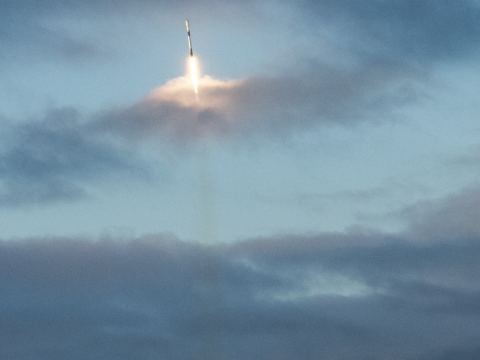U.S. Coast Guard Boosts Alerts Status
The U.S. Coast Guard has deployed a nationwide alert system that notifies its maritime partners as soon as an emergency arises. Unlike previous communications capabilities, this system not only ensures that the appropriate people are alerted but also acts as a status system so during a disaster the Coast Guard can account for all personnel. This single commercial system both delivers the messages and confirms that they have been received—it is a two-way street of information about ground truth.
In the past, the Coast Guard relied on the Marine Safety Information Broadcast system to notify its stakeholders—including port authorities and maritime facility owners—when emergencies occurred. Because the broadcast system is radio based, unless a maritime partner is tuned in to the appropriate station, the manager would not be aware of the crisis.
IWSAlerts, developed by AtHoc Incorporated, enables the Coast Guard to send out information, keep track of when it was sent and determine if it was received. The alerts are sent simultaneously to the cell phones, landline phones, e-mail addresses and fax numbers of approximately 26,000 non-Coast Guard registered users, including facility owners, local maritime officers and local ports of authority. In addition to this audience, more than 50,000 Coast Guard personnel are IWSAlerts users.
For example, if a particular emergency affects 1,000 of its partners, the alert will be sent to those specific partners, who then can notify the Coast Guard if they will respond to the incident or if they cannot respond. As a result, the Coast Guard's leadership has immediate feedback it can use to plan the response.
The Coast Guard's Alert and Warning System initially was developed to transmit maritime security notifications and receive confirmations from maritime security partners and stakeholders in fulfillment of the Maritime Transportation Security Act of 2002. The IWSAlerts system propels the Coast Guard beyond the simple capability to notify to the ability to support hurricane preparedness, natural disaster relief, personnel recalls, search and rescue operations, and waterway closures, a Coast Guard representative says.
Dubhe Beinhorn, AtHoc’s vice president of alliances and channels, explains that IWSAlerts is a third-generation mass notification technology that is being used for both military and homeland security purposes. A simple public address system is a first-generation alerting system; text messaging to cell phones as a means of alert is considered the second generation of alerting systems. "After the events at Virginia Tech, the shortfall of this [second-generation] notification system was revealed. Unless a person had a cell phone on and was paying specific attention to it, many of those who may be in danger or need to respond would not necessarily be aware of the notification," Beinhorn explains.
"This third-generation alert notification system is Internet protocol (IP)-based, which makes it a means of mass notification by combining the first and second generations into any IP device." By sending out alerts via various communications modes, the likelihood of 100 percent notification increases significantly, she adds.
Beinhorn also notes that the IWSAlerts system is legacy compatible. As a result, organizations that already have other mass notification systems in place can continue to take advantage of technology they have already invested in, she says.
The Coast Guard began working with AtHoc in 2006. In March 2009, the service began deploying the latest generation of IWSAlerts. During the interim years, the Coast Guard explored multiple ways to achieve mass notifications to the degree it needed. One reason it decided to contract with AtHoc for IWSAlerts is that the system is a commercial product created to perform to an industry standard. Nine months after the decision to adopt IWSAlerts, the system was fully deployed in the Coast Guard and its partners.
Security was among the top features the Coast Guard required for a mass notification system. To this end, IWSAlerts has been designed so that members of the Coast Guard, as well as other military services that use the product, must use their Common Access Card, a user name and a password to send out alerts.
One of the unintended benefits of IWSAlerts for the Coast Guard has been the ability it gives the organization to acquire information about ground truth. Because communication is two way, personnel on the receiving end of a message alert can also send a return message that includes details about an emergency situation.
According to Beinhorn, more than 1.6 million personnel in the U.S. Defense Department are covered by ISWAlerts today.




Comments